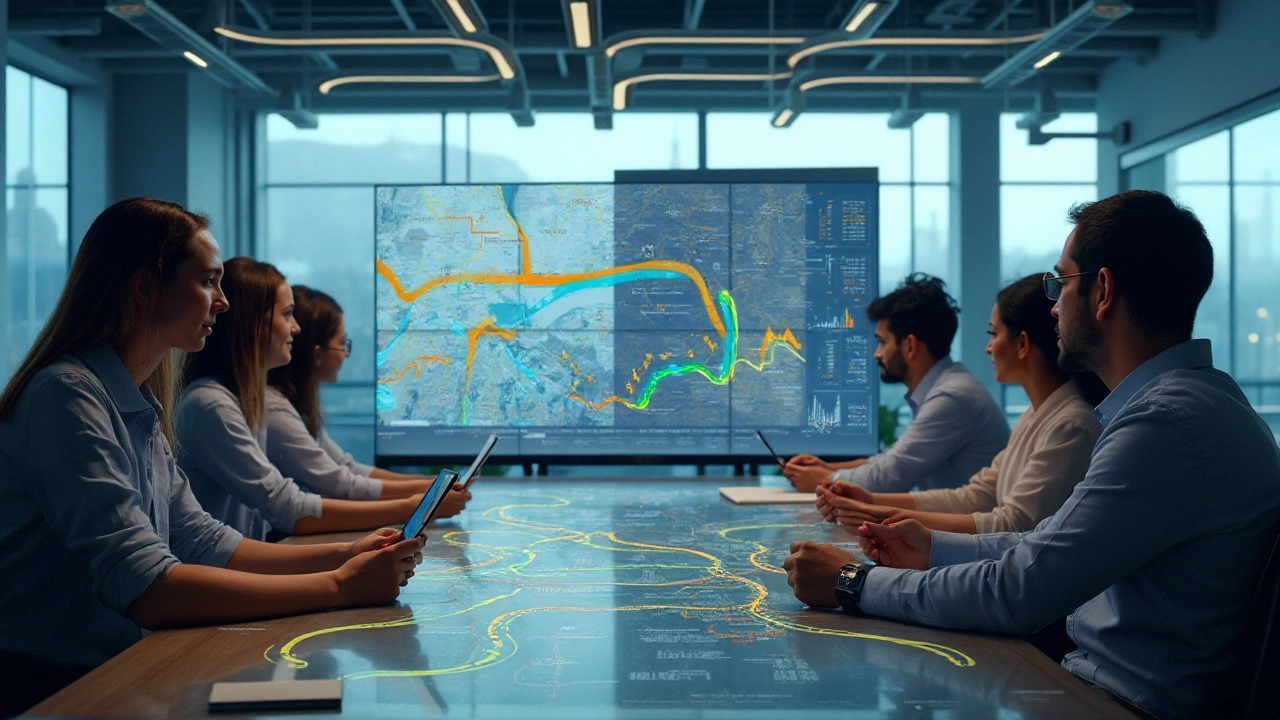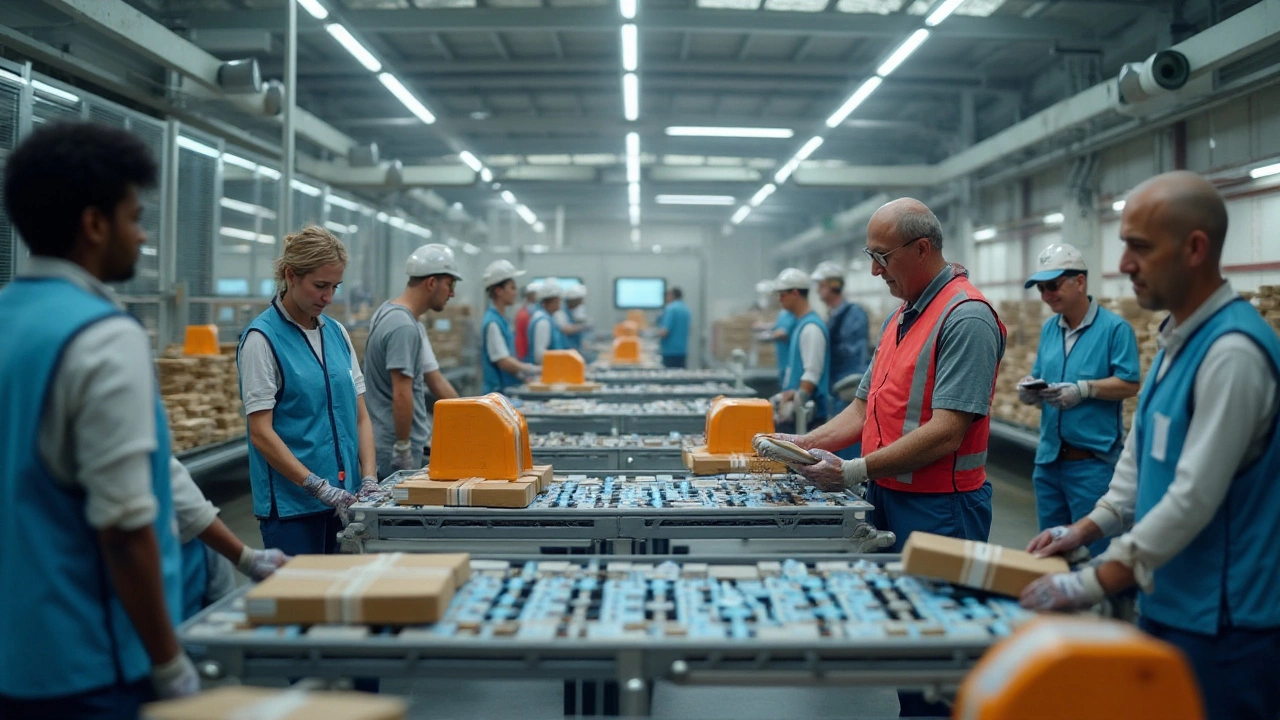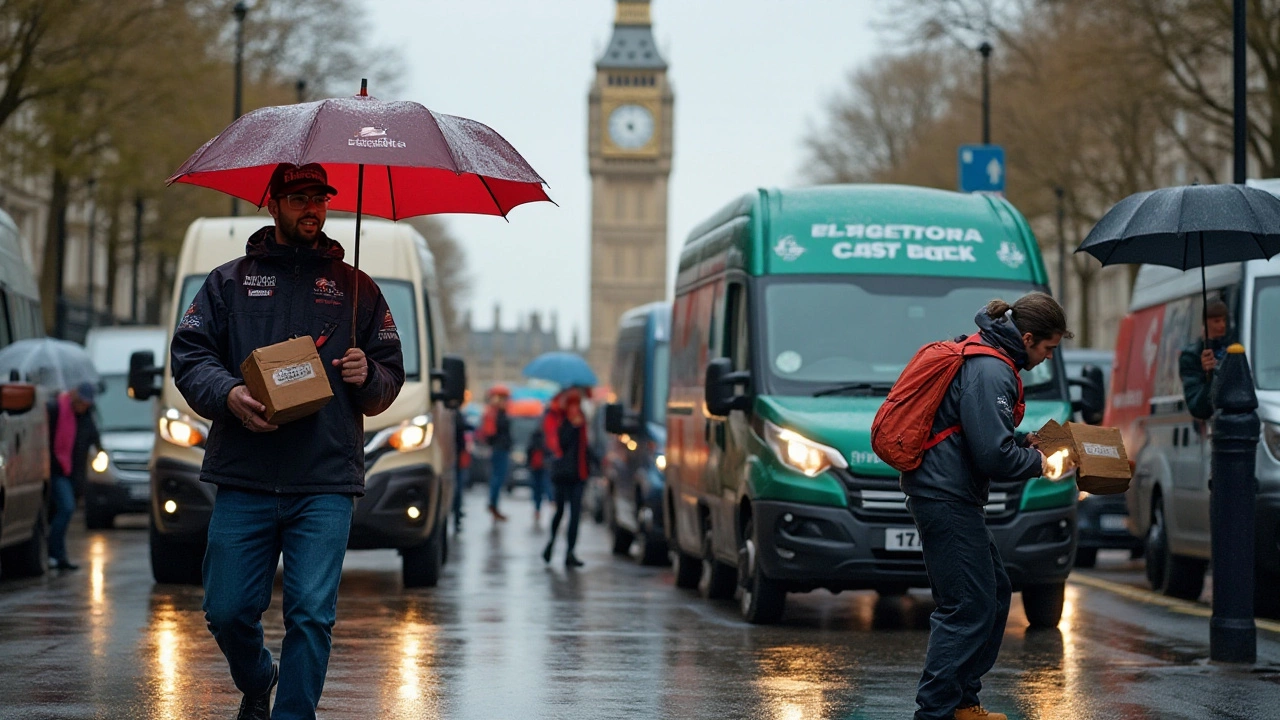In today's world, the hustle and bustle of delivery services is like a well-oiled machine running against time. And if you've ever wondered about how many packages can be whizzed through your neighborhood in just three hours, you're not alone. It's not just about throwing boxes into a van and hitting the road; there's an intricate dance of logistics playing out behind the scenes.
Let's dive into the nuts and bolts of what influences the number of packages that can be delivered in that time frame. From the importance of efficient route planning and the impact of traffic snarls, to the human element of trusty delivery drivers, every piece of this puzzle matters. And with technology continuing to redefine delivery processes, there are always new strategies to consider for getting that package to your door even faster.
- The Basics of Courier Package Deliveries
- Factors Influencing Package Counts
- Tips for Maximizing Deliveries
- Technological Advances in Logistics
The Basics of Courier Package Deliveries
Understanding the basics of courier package deliveries can pull back the curtain on the behind-the-scenes orchestra that ensures parcels reach their destinations. At the core, a successful delivery system hinges on punctuality, reliability, and the seamless handling of package delivery. A courier service acts as the conveyer belt in the life cycle of an item, moving parcels from sellers to customers in a blink of an eye. But just like any process dealing with time and distance, it’s more complex than it might appear.
The journey of a package begins at a distribution center. Here, logistical wizards work out the most efficient way to consolidate shipments. Delivery speed and cost-efficiency both play into how packages are sorted and prioritized. Imagine a chessboard where every move counts, and a delay could have ripple effects. The route optimization software comes into play, and it's quite the game-changer. This technology analyzes current traffic conditions, plotting the most efficient course. When goods need to meet an expedited timeline, time stamps on the packages ensure they are treated with priority.
Couriers aren’t just robots operating a dropship. Drivers play a crucial frontline role, responsible for navigating bustling urban landscapes and challenging rural routes, all while keeping packages safe. These unsung heroes manage not just to deliver but, sometimes, to perform customer service. With a friendly smile or helpful tip, they create little moments of human connection. It's more than a drop-off. It's an interaction, perhaps one that involves a signature, providing the personal touch that keeps customers coming back.
"The logistics and transportation sector continues its digital shift as it embraces cutting-edge tech advancements," says Jane Wall, editor of Logistics Magazine. "These technologies are laying the groundwork for the future of package delivery, providing solutions to traditional challenges of traffic, timing, and transparency."
Moreover, let's not underestimate the power of customer feedback. Input from clients helps refine and perfect delivery processes. It becomes invaluable data that drives improvement and innovation. By understanding where delays or mishaps occur, companies tweak their strategies, streamlining tasks or even retraining staff to achieve excellence. Think of it as the delivery GPS’s secret feedback loop, constantly updating and refining for pinpoint accuracy.
Efficiency doesn't just mean fast. It's about making sure courier services operate sustainably too. With carbon footprints left in the wake of delivery fleets, many companies are striving for green solutions, like electric vehicles or bikes. These initiatives not only appeal to environmentally conscious clients but also contribute to global efforts in reducing emissions. Tackling sustainability is turning into a collaborative movement across industries, and the role of couriers is ever-evolving to meet these demands.

Factors Influencing Package Counts
When it comes to the bustling world of courier services, every second counts. The sheer tally of packages that a driver can handle in a three-hour window depends on a cocktail of elements intricately woven together. To begin with, the layout and density of delivery routes play a pivotal role. In urban jungles, a driver might visit several addresses in a single high-rise, whereas in rural areas, each stop might be miles apart. This stark contrast in geographical layout can make or break the efficiency of package deliveries.
Traffic conditions directly influence delivery outcomes, especially in metros clogged with bumper-to-bumper vehicles. A study published by the National Association of City Transportation Officials highlighted that congestion can reduce delivery efficiency by up to 33%. Delivery companies often invest in real-time traffic monitoring systems, helping drivers zip through city streets with savvy rerouting. Technology such as GPS and route optimization software aids in carving out the shortest, most effective path, trimming precious minutes off every stop.
The human element cannot be neglected – the skills and experience of delivery personnel are crucial to achieving high package counts. Veteran drivers not only know the ins and outs of their territories but often develop time-saving rapport with recurring customers. Efficiency can be ramped up by teamwork too, as sync between warehouse staff, who prepare packages, and delivery drivers, who execute the final journey, is critical. A multi-drop plan allows drivers to cover more ground, dropping several packages in a single trip rather than scuttling back to the depot repeatedly.
The Wall Street Journal reported, "An efficient logistics operation can deliver the same volume of packages with fewer resources, leading to greater profits both for courier businesses and partner enterprises." Such insights underscore how improved logistics are a game-changer in the competitive world of package delivery.
Sometimes, sheer unpredictability comes into play. Severe weather, unexpected roadblocks, or sudden peak-time surges – such as the holiday season – can topple even the best-laid plans. Therefore, adaptability is key. Couriers that are prepared with contingency plans, like extra labor or alternative routes, can maintain their delivery standards when unpredictability strikes. In the evolving landscape of logistics, staying nimble and ready to pivot ensures that no delivery target is missed even under pressure.
Technology is the trump card. Telematics systems, which collect and transmit data on vehicle positioning and status, provide companies with actionable insights. Here’s an example table showcasing how frequent interventions helped in boosting delivery counts from January to September 2024:
| Month | Deliveries per 3-Hour Block | Improvement after Interventions |
|---|---|---|
| January | 45 | 52 |
| April | 48 | 56 |
| September | 50 | 60 |
From strategizing routes to investing in driver training, companies like UPS and FedEx constantly innovate to enhance their service quality. An excellent grasp of the factors at play allows couriers to fine-tune their approaches, refining processes to boost their competitiveness while keeping customer satisfaction at the core of their operations. Whether through smart tech deployments or age-old wit and wisdom, delivering packages is truly an art in the logistics symphony.

Tips for Maximizing Deliveries
Boosting the number of successful package deliveries in a 3-hour window requires strategic planning and smart execution. At the heart of enhancing delivery efficiency is effective route optimization. Using advanced algorithms, courier services can determine the most efficient paths, reducing travel time and fuel consumption. These systems analyze traffic conditions, stops, and even roadworks to ensure the path taken is the best. It's like having a GPS with a crystal ball, foreseeing hurdles before they happen. And this isn't just about saving time; it significantly cuts costs too. Leading logistics firms often see a reduction in mileage by 10% to 40% when employing these systems. Quite an impressive figure, isn't it? This optimization dance, akin to masterfully piecing together a complex puzzle, allows couriers to make more stops without stretching resources thin.
Another essential aspect is the judicious management of human resources. Training delivery personnel to adhere to best practices ensures that every package handled reaches safely and promptly. The human element often plays a pivotal role in service satisfaction. When drivers know their routes, have familiarized themselves with the usual quirks along their delivery path, efficiency naturally ascends. It's akin to a musician knowing their instrument inside out. A driver well-acquainted with their areas lessens the chances of missed deliveries and wasted time. Interestingly, incorporating real-time feedback from drivers often leads to improvements in delivery protocols, contributing significantly to the process.
Leveraging technology strategically can also turn the tide. The use of handheld devices, for instance, streamlines delivery confirmations and updates. It ensures that each package's journey is tracked with precision, reducing errors significantly. The data collected can be analyzed to refine delivery strategies, creating a loop of continuous improvement. Quotes from industry leaders often underscore the importance of technology in today’s delivery landscape. A notable thought leader once remarked, "Technology in logistics isn’t just an aid; it’s a driving force for evolution."
"The greatest progress is not in merely increasing numbers but in finding smarter, more sustainable ways to operate."
Then there is the magic of customer communication. Keeping customers in the loop with real-time notifications can greatly enhance the delivery experience. This transparency builds trust and helps in aligning expectations. Providing recipients with options to reschedule or specify delivery preferences can eliminate failed deliveries, optimizing the cycle further. Investing in apps that notify customers of the delivery ETA or changes can reduce missed deliveries by over 20%. Such interactions, though seemingly small, culminate in a sense of reliability and customer loyalty, pivotal in the fast-paced world of courier services.
Lastly, periodic evaluations and feedback loops prove indispensable. By constantly reviewing the delivery processes, identifying bottlenecks, and implementing corrective measures, courier services can refine their strategies. Regular workshops and open forums for drivers to voice hurdles faced on-ground can also bring about significant positive changes. Incorporating their insights can reveal on-ground challenges that might not be apparent through mere data analysis. An organized feedback system ensures a balanced approach between digital insights and the invaluable human touch.

Technological Advances in Logistics
In the rapidly shifting landscape of courier services, technology is not just an upgrade—it's the backbone of future advancements. One major game-changer in this arena is the advent of real-time tracking systems. These systems not only enhance the transparency of package delivery processes but also streamline operations by providing up-to-minute updates. Customers can now monitor their package’s journey from warehouse to doorstep, which promotes trust and satisfaction. This transparency also allows logistics companies to tweak delivery routes as needed, maximizing efficiency and reducing unnecessary detours due to unforeseen traffic conditions.
Another giant leap forward is the use of autonomous vehicles and drones in shipping. While still in the early stages, autonomous technology promises to dramatically alter how packages are delivered, especially in remote or hard-to-reach places. The idea of unmanned aerial devices dropping packages at your doorstep sounds futuristic, but several companies have already begun testing this with encouraging results. These innovations aim to cut down delivery times significantly, especially during peak hours when roads tend to get congested. According to a report by McKinsey, the use of drones could potentially speed up deliveries by up to 60% in urban areas.
Artificial intelligence (AI) and machine learning have also found a place in the logistics sector, specifically in route optimization. By analyzing data such as traffic patterns, location density, and historical delivery performance, AI tools recommend the most efficient routes for deliveries. This not only saves time but also helps in conserving fuel, leading to more environmentally friendly operations. AI's ability to learn and adapt makes it invaluable for companies looking to enhance their service and remain competitive in a constantly evolving market.
"With advances in AI and robotics, what we’re seeing is a logistics revolution where speed and efficiency are not just goals but the standard," said Jane Hurst, a renowned technology analyst.
Meanwhile, the integration of Internet of Things (IoT) devices is taking logistics networks to a whole new level. IoT-connected sensors and devices are used to monitor conditions within vehicles and warehouses, ensuring that packages are kept in optimal conditions from start to finish. Real-time data collection helps identify and solve problems before they impact delivery times. Companies can now prevent delays from issues like vehicle breakdowns by receiving alerts instantly and rerouting or rescheduling deliveries.
Lastly, the introduction of blockchain technology in logistics is beginning to gain traction. Though still emerging, its potential for enhancing security and efficiency is substantial. Blockchain can create a tamper-proof ledger of all transactions and interactions within the supply chain, providing a level of security unmatched by traditional systems. This ensures the authenticity and integrity of records, crucial for industries like pharmaceuticals, where accuracy is paramount. Moreover, smart contracts within blockchains promise to automate and expedite processes, removing the lag inherent with manual systems.


